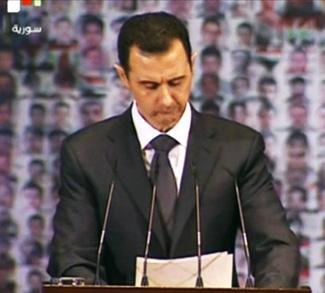The years running-up to the biggest migrant crisis Europe has faced since World War II saw increasing numbers of migrants from conflict-torn counties. 2014 and 2015 were the backdrops for the high pitch of European migration, with record numbers of people showing up on Europe’s doorstep with the aim of seeking a new life in and among European states. Most migrants opt for the crème-de-la-crème of Europe: Germany, Sweden, or the United Kingdom (UK). Internal political strife has led to deep and probably lasting divisions among European Union (EU) member states. Although a meta-division has put Europe’s west and east in opposition to one another, the EU now has open-door immigration. It is unlikely to end its open-door policy in the near future. The biggest problem with this policy is the message it sends to future migrants from places like Syria, Afghanistan, Eritrea, Nigeria, Ethiopia, Gambia, Somalia, and Bangladesh.
The Great Wave
Middle East countries like Jordan have taken in an immense number of migrants relative to the size and wealth of the country. Even the most basic services are difficult to provide to the over one million migrants now living in Jordan, which itself has a population of just 6.5 million. Migrants see Europe as a place of wealth and the EU appears as a bloc of rich states able and willing to provide a life free of violence and insecurity. Roughly 100 migrants reach Germany every hour. About 350,000 migrants have been registered in Europe since the beginning of 2015. Those numbers are expected to rise as Europe’s migrant crisis is expected to play out over a long period. Herein lies the second problem associated with the EU’s open door policy: the sheer number of migrants that could come. Syria has a population of roughly 22 million, Iraq 33 million, Bangladesh 156 million, Afghanistan 30 million, and Somalia 10 million. Thus, there’s a seemingly unlimited supply of migrants able to come to Europe.
Different Attitudes in the Middle East
A third problem concerns the rationale behind Europe’s migrant policy. A driving logic behind migrant acceptance is the core principles and values of the EU. Each member state’s moral and legal obligations are frequently cited as reason to open the floodgates. Argumentation in along this line has also led to the attempted establishment of forced migrant quotas. Gulf States are strongly opposed to accepting migrants the way the EU does. Why? Despite their oil riches, states in the Middle East say that they are not suitable destinations for migrants “precisely because of their often deceptive cultural closeness to most of the Syrians fleeing the conflict.”
Some have taken a different approach, especially given their size and populations demographics. The United Arab Emirates (UAE), for instance, prefers to pay to maintain refugee camps in and around Syria. Refugee camps have proven to be remarkably successful alternatives to policies such as the one implemented by the EU. One such example is found in Kenya. Dadaab is the world’s largest refugee camp, which was originally built to accommodate 90,000 people but is now home to 350,000 people who enjoy peace and security on a daily basis. Other Gulf States have wrestled with the challenge of sectarian differences. Trouble in this field has already made its way to the fore in several Muslim countries where ethnic and religious balance is a major concern.
Israel’s Prime Minister Benjamin Netanyahu made no attempt to conceal his unease over the idea of accepting migrants from an “enemy” state. Israel and Syria have been engaged in numerous conflicts, some of which involved dangerous non-state actors (NSAs) like the Palestine Liberation Organization (PLO) operating from within Syrian borders. The most recent high point of hostilities was during the 2000s, which centered on Palestinian militants inside Syria. Since 2006, Syria has been in an alliance with Israel’s biggest enemy, Iran. Benny Gantz, the Israel Defense Force’s (IDF) Chief of Staff said that Israel was willing to accept Alawite refugees during the Syrian civil war. Amid the growing migrant crisis, Israel’s Public Security Minister, Gilad Erdan, warned that illegal immigrants could be recruits of the Islamic State (IS). “It is not unrealistic that [IS] and other terrorist groups operating in Sinai,” stated Erdan, “would take advantage of [migrants’] distress to recruit them […] The procedure according to which illegal migrants who enter Israel are taken to Immigration Authority and the police must be changed. This must be treated as a security issue that requires a solution.”
Terrorist Threat: From Europe to North America
An enormous influx of migrants to Europe ought to raise concerns for the United States not to mention its Middle East ally, Israel. The US government is also at “war” in Syria and Iraq, albeit in the form of a multifaceted conflict, but this is still war. Martin O’Malley, Governor of Maryland, has called for the US to accept up to 65,000 Syrian migrants, saying that, “if Germany – a country with one-fourth our population – can accept 800,000 refugees this year, certainly we – the nation of immigrants and refugees – can do more” (Cable News Network [CNN], 2015). Opening the door to the U.S. when military operations are currently being conducted against a nation in which IS and other dangerous extremist groups operate would be like opening the door to Afghani migrants while the US is at war with the Taliban. Members of the Taliban could simply find their way to the U.S. and carry out terrorist acts within US borders.
The possibility of IS militants hiding among migrants is not unsubstantiated. Earlier this year IS openly threatened to send 500,000 migrants to Europe, stating that it would be a “psychological weapon.” The head of the EU’s judicial cooperation agency Eurojust, Michèle Coninsx, reflected on the migrant crisis as a security concern, stating in July that IS terrorists arriving in Europe could be making their way quite easily by hiding among migrants making the journey across the Mediterranean. Trafficked migrants who aren’t terrorists are fulfilling a vital role for IS by financing its extremist cause. “It is an alarming situation,” said Coninsx, “because we see obviously that these smugglings are meant to sometimes finance terrorism and that these smugglings are used sometimes to have and ensure infiltrations by members of the Islamic State.”
The opinions, beliefs, and viewpoints expressed by the authors are theirs alone and don’t reflect any official position of Geopoliticalmonitor.com.




